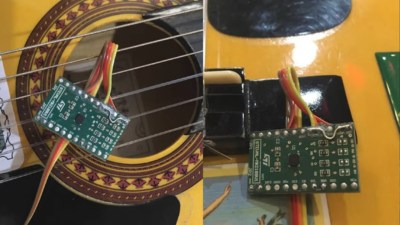Software defined radio has become a staple of the RF tinkerer, but it’s likely that very few of us have ever taken their software defined toolchain outside the bounds of radio. It’s an area explored by Mike Ossmann and Kate Temkin in their newly published Supercon talk as they use GNU Radio to do some things that you might find unexpected.
For most people, a software defined radio is a device. An RTL-SDR dongle perhaps, or the HackRF that a popular multi-tool for working in the radio frequency realm. But as they explain, the SDR hardware can be considered merely as the analogue front end, being just the minimal analogue circuitry coupled with a digitiser. The real software-defined part comes — as you might expect — in the software
Kate and Mike introduce GNU Radio Companion — the graphical UI for GNU Radio — as their tool of choice and praise it’s use as a general purpose digital signal processing system whether or not that includes radio. Taking their own Great Scott Gadgets GreatFET One USB hackers toolkit peripheral as an input device they demonstrate this by analysing the output from a light sensor. Instantly they can analyse the mains frequency in a frequency-domain plot, and the pulse frequency of the LEDs. But their bag of tricks goes much deeper, exploring multiple “atypical use cases” that unlock a whole new world through creative digital signal processing (DSP).
Software Defining New Uses for Existing Sensors
Analysing a baseband analogue signal is the stock-in-trade of cheap SDRs, as many readers will know a computer soundcard can form the baseband front-end into which an RF down-converter is plugged to make a software-defined receiver. Where this talk takes us is uncharted territory though, as the devices being used for inputs aren’t analogue at all but digital, with I2C interfaces.
 The main demonstration underlines this, using an accelerometer breakout board as an acoustic guitar pickup. This is an ideal demonstration of GNU Radio’s DSP abilities, as a range of guitar effects are simulated in software for some entertaining results. Even a cardboard box with a rubber band becomes a musical instrument worthy of a rock group, something that goes down well with the audience.
The main demonstration underlines this, using an accelerometer breakout board as an acoustic guitar pickup. This is an ideal demonstration of GNU Radio’s DSP abilities, as a range of guitar effects are simulated in software for some entertaining results. Even a cardboard box with a rubber band becomes a musical instrument worthy of a rock group, something that goes down well with the audience.
As hackers it’s our mission to push whatever medium we work with beyond its normal application, and to find exciting new uses for established pieces of tech. This talk takes the unusual step of starting with something that’s already a hacker tool, a DSP platform for software defined radio, and turning it into a more general-purpose DSP toolkit with applications far further than those we’d normally associate it with. The sheer number and variety of available blocks make it an exceptionally versatile platform, while the manageable user interface of GNU Radio Companion renders it within the reach of even the most novice of experimenters.
It’s the essence of hacking and it’s something we can all have a go it, so we hope this talk inspires a whole slew of DSP projects of a type we wouldn’t otherwise have seen. If you’re tempted, get hold of a copy of GNU Radio and GNU Radio Companion, and show us what you can do!
Hear more from Kate Temkin as she hosts next week’s Hacking USB Hack Chat.
via Radio Hacks – Hackaday https://ift.tt/2T0mfHE
No comments:
Post a Comment